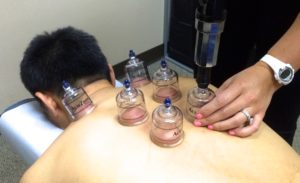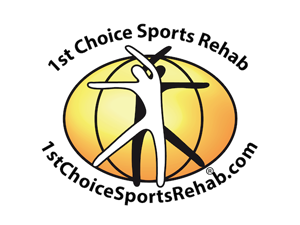Cupping – the “Gold Medal” Buzz
by Valerie Hauser, DPT
 Every four years, we get to enjoy watching some of the best athletes in the world compete in the Olympics. If you’ve been watching the 2016 Olympics, you’ve probably noticed the perfectly round bruises on Michael Phelps’s and other Olympic athletes’ backs, necks, and shoulders during competition. This ecchymosis (bruising) is derived from a soft tissue therapy called cupping. So what is cupping, how is it used, and who can benefit from it?
Every four years, we get to enjoy watching some of the best athletes in the world compete in the Olympics. If you’ve been watching the 2016 Olympics, you’ve probably noticed the perfectly round bruises on Michael Phelps’s and other Olympic athletes’ backs, necks, and shoulders during competition. This ecchymosis (bruising) is derived from a soft tissue therapy called cupping. So what is cupping, how is it used, and who can benefit from it?
Cupping has been practiced in multiple cultures throughout history, with the earliest record dating back to 1550 B.C.E.1, describing cupping being used for toxin removal and treatment of pain and various other complaints. While its popularity faded in Western medicine during the late 20th century, cupping has resurfaced in the past few years, and new clinical trials suggest cupping may be effective in pain management and rehabilitation from injury.1
Multiple applications of cupping can be used, dry cupping being the most widely used by Western medicine. Dry cupping involves the use of small, round cups made of thick glass or plastic, with rolled edges to allow for airtight contact with the skin. While fire or heat can be used, more commonly (as done in our office) a manual hand-pump is used to create a vacuum effect on the skin. Cups can be left in place for a given amount of time or paired with active or passive motion, often leaving behind the infamous round bruises at the site of the cups.
Theories vary regarding physiological effects of cupping. Although there is not enough supportive evidence to confirm these results, cupping has been proposed to be effective in:
- Improving range of motion
- Decreasing pain
- Promoting circulation to help with tissue healing and/or recovery
- Promoting lymph flow
While cupping is considered a safe therapy, with minor risk of complications, contraindications include pregnancy or menstruation, cancer, bone fracture, use of blood thinners, deep vein thrombosis, use over arteries or pulses, or over an area where the skin is compromised (sunburn, open wound, rash, contusion or bruise).
So next time you see an Olympic gold medalist celebrating a win with perfectly round bruises on their bodies, you’ll know what they are and where they came from. If you would like to have one of our doctors evaluate whether your condition might respond well to this form of treatment or our other restorative soft tissue techniques, call 404-377-0011 to schedule an evaluation.
Valerie Hauser, DPT is the newest member of the 1st Choice Sports Rehab clinical team. She obtained her Doctorate in Physical Therapy from Franklin Pierce University. She is a full body certified Fascial Distortion Method Provider and a Certified Strength and Conditioning Specialist (CSCS). She and her husband Andrew enjoy their two dogs and exploring all that Atlanta has to offer.
1Rozenfeld, E., Kalichman, L. (2016). New is the well-forgotten old: the use of dry cupping in musculoskeletal medicine. Journal of Bodywork & Movement Therapies, 20, 173-178.
2545 Lawrenceville Hwy
Suite 100
Decatur, GA 30033
404-377-0011
9810-B Medlock Bridge Rd
Suite 104
Johns Creek, GA 30097
404-300-9931
